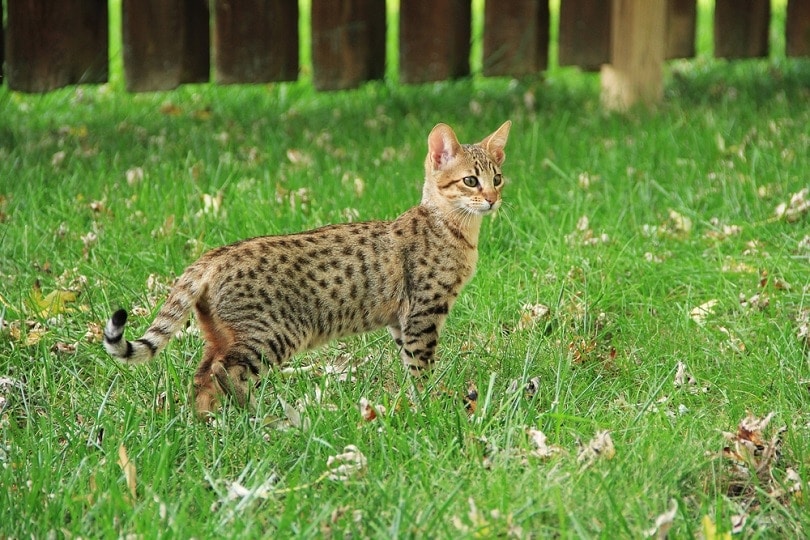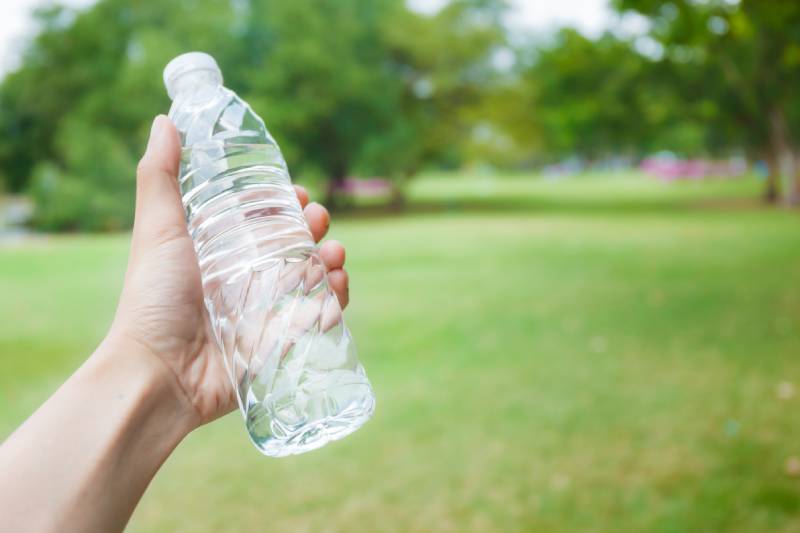Magnesium for Cats: 10 Vet Approved Sources
By Jessica Kim
Updated on
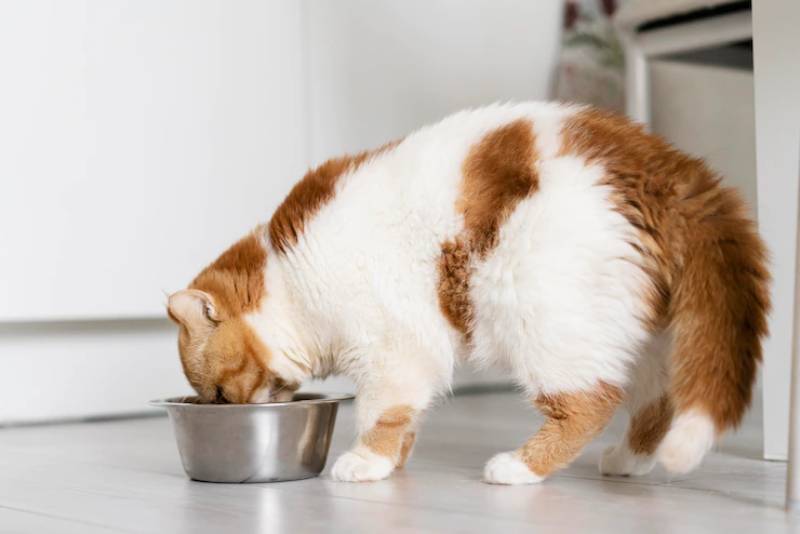
Magnesium is an essential nutrient for cats, but it must be given in moderation. Magnesium acts as a catalyst for hundreds of enzymatic reactions in the body, and cats with magnesium deficiencies suffer from the clinical disease of hypomagnesemia.
However, too much of a good thing can be a bad thing, and magnesium is no exception. A cat that consumes too much magnesium can experience issues with their cardiovascular and nervous systems. Excessive magnesium intake may also be linked to bladder stones.
Being aware and knowledgeable of food with high levels of magnesium can help you ensure your cat’s eating a nutritionally balanced diet. Here are some foods that are high in magnesium and safe for cats to eat.
The 10 Magnesium Rich Foods for Cats
1. Spinach
Spinach is a highly nutritious food, and it’s often used as an ingredient in commercial cat food. Along with being a good source of magnesium, it’s rich in calcium, manganese, iron, and vitamin K. Spinach also has antioxidants that boost immune health and reduce cells’ damage from free radicals.
Spinach can be fed to cats in all forms. However, some cats may have trouble digesting the fiber and may do well eating cooked spinach, which has less fiber than raw spinach.
2. Pumpkin Seeds
Pumpkin seeds are highly nutritious and safe for cats to eat. They also contain manganese, vitamin K, zinc, and phosphorus. Just keep in mind that they’re high in calories, so they should only be fed to cats as an occasional snack.
It’s important to feed cats pumpkin seeds without their shells to prevent choking. Some cats may be prone to having seeds get stuck between their teeth. So, it can be helpful to crush or blend the seeds into smaller pieces before feeding.
3. Salmon
Along with magnesium, salmon and other fatty fish are excellent sources of omega fatty acids. Fatty acids have many health benefits, including conditioning and nourishing the skin and coat and lowering the risk of heart disease.
Salmon is a popular ingredient in cat food and treats, so you shouldn’t have any trouble finding it in pet stores. If you plan to feed your cat salmon, make sure to cook it thoroughly and refrain from serving it raw. Cats also shouldn’t eat smoked salmon because it’s high in sodium. It’s best to serve them unseasoned salmon.
4. Chicken Breast
Chicken breast is another popular ingredient in cat food, and most cats will enjoy eating it plain. While chicken has several health benefits, cats can’t survive on just chicken alone. So, chicken breast is usually best to give to cats as a treat.
Only feed your cat plain cooked chicken breast and avoid giving it rotisserie chicken. Rotisserie chicken contains herbs and spices that can be harmful to cats, like onion powder and oregano. Cats also shouldn’t eat fried chicken because of the seasoning on the skin and its high fat content.
5. Apples
Despite being obligate carnivores, some cats may enjoy eating apples as a treat. Apples are high in fiber and a great source of vitamin C, potassium, and several different kinds of antioxidants. They’re also linked to helping control blood sugar levels and possibly lowering risks for certain cancers.
Apples should only be given to cats as snacks because they contain a lot of sugar. They can be given raw or cooked, and it’s often best to remove the peel because it contains a lot of fiber and can be difficult for some cats to digest.
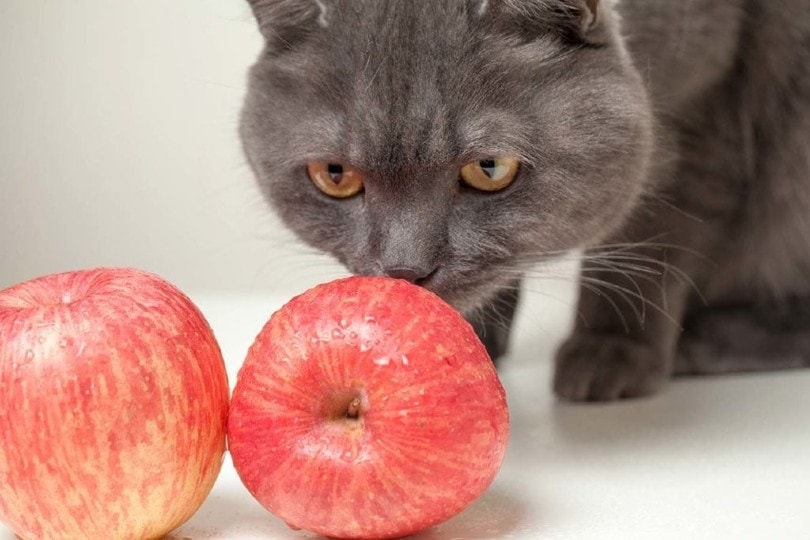
6. Bananas
Cats can eat small portions of bananas. However, since they’re high in sugar, eating too much can quickly lead to unnecessary weight gain.
Along with being a good source of magnesium, bananas contain potassium, vitamin B16, and fiber. They’re best served in their raw form, which is often better than dried bananas. Dried and dehydrated bananas have a lot of sugar, and dried bananas can also be a choking hazard for cats.
7. Oatmeal
Oatmeal is a highly nutritious food that’s rich in fiber, phosphorus, thiamine, and zinc. It’s also an ingredient that gets included in commercial cat foods.
Make sure to only make cooked oatmeal with water and refrain from using milk, as many cats are lactose-intolerant. It’s also important not to feed cats oatmeal or grains on granola bars because they’re usually coated in too much sugar or honey.
8. Beef
Beef is another popular ingredient used in commercial cat food. Along with being a good source of magnesium, it’s also rich in iron, zinc, and protein. Keep in mind that beef also tends to be high in fat and cholesterol, so it’s important to shop for lean beef for your cat.
Beef should be fully cooked and unseasoned. Feeding your cat raw beef can put your cat at risk of food poisoning. Make sure to also remove any bits of fat before giving beef to your cat.

9. Potatoes
While cats shouldn’t eat raw potatoes, cooked potatoes are safe for them to eat. On top of being a good source of magnesium, cooked potatoes also contain a good amount of vitamin C and potassium.
Cats should never eat raw potatoes because of their toxicity. The best way to give potatoes to cats is to peel and roast them without any seasoning. Beware of feeding your cat premade mashed potatoes, as they often contain other ingredients that are harmful to cats, like garlic.
10. Legumes
Legumes are safe for some cats to eat if they’re given in small portions. While being a good source of magnesium, in some species they can also help with lowering blood sugar and blood pressure.
If you choose to feed your cat beans, make sure only to give a small amount. Beans can cause gassiness and gastrointestinal upset. If you find that your cat isn’t able to digest them very well, make sure to stop feeding right away.
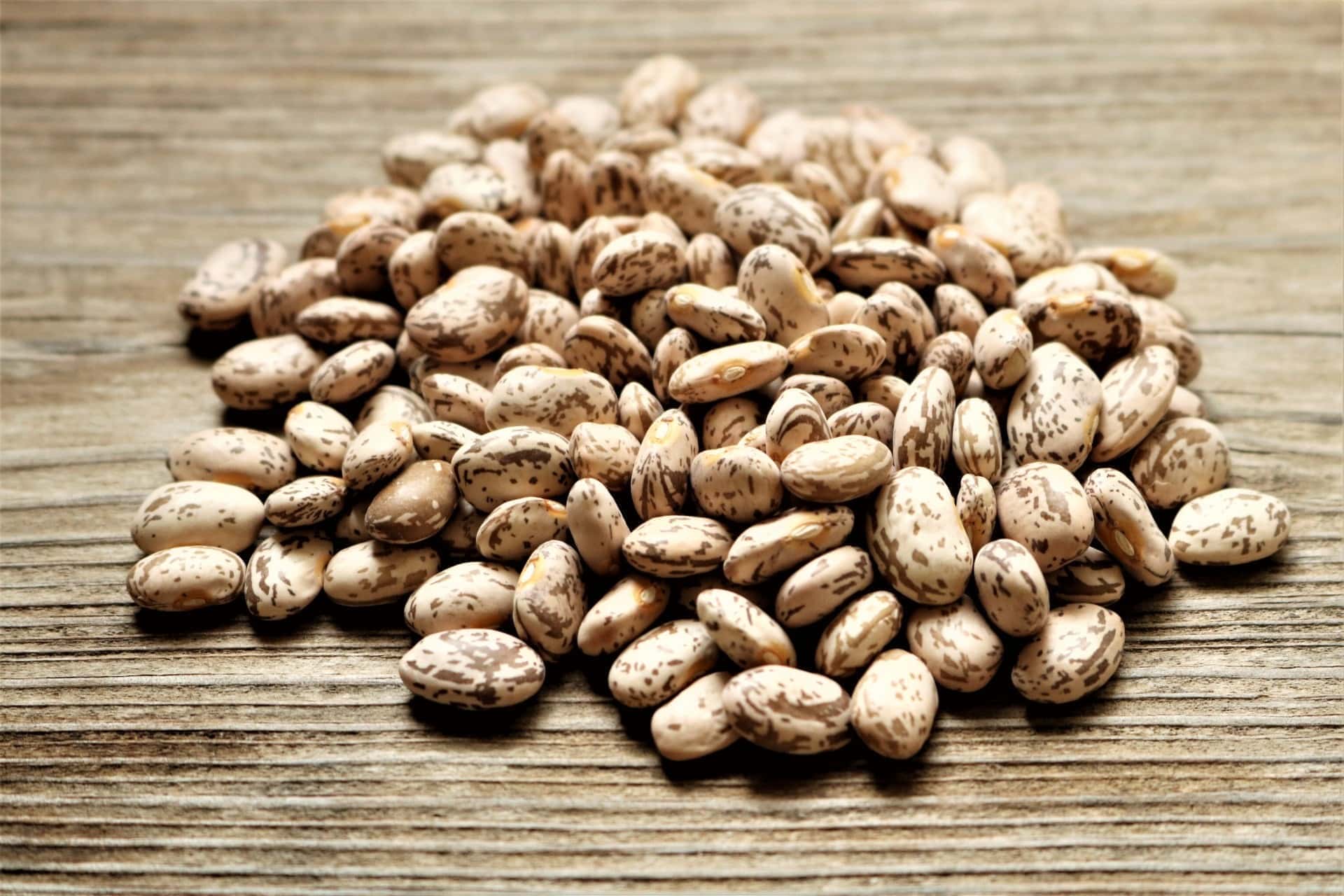
Conclusion
Magnesium is a nutrient that’s essential for cats, but it’s important that they don’t exceed their recommended daily intake. Too much magnesium can lead to significant health problems.
If you suspect that your cat’s suffering from hypomagnesemia, schedule a visit with your veterinarian. Your veterinarian can help diagnose the issue and help you come up with a treatment plan that’ll add more magnesium to your cat’s diet.
Featured Image Credit: Freepik




